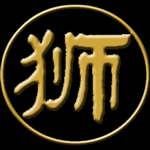The legend says "Nian" was a feirce monster that especially liked kidnapping children. He terrorized villages year after year. Finally, one year, a lion defeated and chased the monster away. Nian vowed to return next year. This time the villagers did not have a lion to protect themselves. So, they solved the problem by creating a costume likeness of a lion and two villagers used it to scare Nian away. This is the reason the lion dance is performed every Chinese New Year. Legend also says that loud noises from the drum, other instruments, and firecrackers helped scare Nian away. Red is worn during the New Years celebration because it was also believed that Nian was afraid of the color red. The word "Nian," thought the yearly ceremony, has become the Chinese word for year.
Another origin of the lion dance is that an emperor of the Tang Dynasty had a dream in which a strange creature saved his life. When he woke, he described his dream. His advisors said the creature he describe resembled the lion, a creature from the West. The emperor commissioned the lion dance in honor of the creature that saved his life. The Tang dynasty saw lion dancing at its peak. One record states that a dance performed for nobles contained 12 groups of 5 lions, each with 12 'lion-men' following each lion. They danced to 140 people singing the 'tai-ping' melody (composed in the Tang Dynasty).
The Little Buddha originates from the Buddist/Shaolin monks that was thought to have trained the first lion dancers. The Little Buddha is sometimes refered to as the da to fut, or big headed monk.

